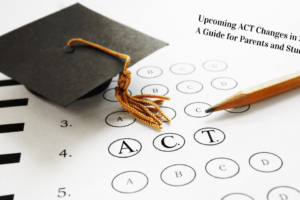
How Positive Language Impacts Learning
 “The pen is mightier than the sword.” We’ve all heard this before. Indeed, words have power. Perhaps what we forget at times, however, is the unique power (good and bad) words can have with young learners in particular. The way you frame a statement can make all the difference in the world. At the same time that worlds can encourage, inspire, and affect change, they can also demean, discourage, and damage. It is so important that we chose our words carefully when working with impressionable and vulnerable young people. Below, we explore some ways to keep it positive and strengths-based when working and communicating with young folks.
“The pen is mightier than the sword.” We’ve all heard this before. Indeed, words have power. Perhaps what we forget at times, however, is the unique power (good and bad) words can have with young learners in particular. The way you frame a statement can make all the difference in the world. At the same time that worlds can encourage, inspire, and affect change, they can also demean, discourage, and damage. It is so important that we chose our words carefully when working with impressionable and vulnerable young people. Below, we explore some ways to keep it positive and strengths-based when working and communicating with young folks.
There’s more than one way to say it: There are many ways to say many things and teaching or working with kids can sometimes feel like a kind of “verbal judo.” Consider changing up your language, after all there are a ton of ways to say “good for you.” Revamping your vocabulary to make it more positive can go a long way toward being a source of support and inspiration for your students or children. Tennessee teacher Alyssa Nucaro has implemented a “three-to-one” rule for herself, where for every negative statement she makes, she works to include at least three positive statements to the whole class. Mindfulness of how we talk and what we say is important when we are working with kids and teens, who are often extremely sensitive to negative comments or “tough love.” When we model thoughtful, positive language, young people often follow our lead.
Honesty’s the best policy: There is a marked difference between saying something nice because you mean it and being “dishonestly positive.” Directness, even when correcting behavior, will be much appreciated by students. A student who hears, for example, “please remember, our expectation is for you to wait your turn to speak” will probably respond more positively than the student who hears an angry, pejorative “don’t talk out of turn.” Thoughtful, honest language lays a foundation of trust and allows for a better opportunity for rapport-building and strong relationships between students and teachers, resulting in a better chance for classroom management and social growth.
Don’t say don’t: In the quest to use positive, empowering language with students, we must be mindful of our word choice. Words like don’t, can’t, and won’t can activate negative emotions in kids, so reframing to use more positive words is important. As mentioned above, by keeping your language and statements honest and direct, you avoid miscommunication that may lead to problems. Consider some of the following statements and pay attention to the careful construction of positive, empowering words and phrases: mistakes help you learn and grow, struggling makes me stronger, math mistakes allow thinking to happen, you are capable of amazing things. The first phrase, for instance, takes the negative implications of the word “mistake” and gives it a positive spin. This is a perfect example of what we aim to do when we become more mindful of our communication styles and choices. The impact this can have on our students and children can have life-long implications.
Written by Phil Lane
Contact us today to learn more about how our tutors can help your child!



